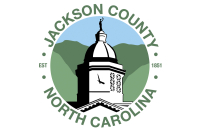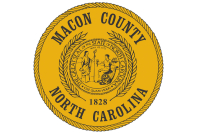Great Smokies become instant recipe for tourists
The mountains of Western North Carolina were no stranger to tourism prior to the creation of the Great Smoky Mountains National Park, which today rakes in 9 million visitors and is by far the most visited national park in the country.
Trains loaded with wealthy tourists from Charleston, Atlanta and beyond pulled into the stations in Bryson City and Waynesville daily. Many spent their entire summers in the mountains to escape the Southern heat.
But the creation of the Great Smoky Mountains National Park catapulted the region into a new era of tourism: one centered on the burgeoning automobile.
Initially automobile trips into the Smokies became a lucrative business for those capitalizing on the throngs of summer tourists arriving by train, said Henry Foy, whose mother operated the Herren House in Waynesville.
“We would be in the dining room at dinner and the owner of a taxi company would come down and tell people he was organizing a daytrip to the Smokies if they were interested,” Foy recalled.
As owning cars became commonplace following WWII, the Smokies offered an unrivaled auto touring adventure. Nowhere was the impact of tourism more prevelant than in Cherokee, the final gateway to the park from North Carolina. Traffic would often back up for miles as it inched along Cherokee’s main drag toward the park entrance.
Related Items
“It was bumper to bumper to bumper for miles,” recalled Bill Gibson, who lived in Bryson City but worked as a short-order cook at a foodstand in Cherokee as a teenager. “I had never been anywhere, so I didn’t relate to where these people were coming from or going back to other than what I saw in a geography book in school. These folks weren’t alien Martians, but I can recall seeing a Florida plate, and it was unusual enough to be something to be proud of.”
License plate spotting was apparently a popular pastime for the region’s youth.
“We played this silly game where we tried to see the most exotic license plate,” said Gary Carden, who whiled away the summer afternoons along the roadside in Cherokee with other children. As they watched the tourists go by in their Henry Js and Studebakers in the 1950s, without fail a carload of tourists would make hand motions like a teepee, prompting the children to mock the silly gestures after the car had passed. Even thought the Cherokee never lived in teepees, historical accuracy was lost on the tourists who held their own notions of what Indians should look like. So the Cherokee soon lined the road with fake teepees, donned headdresses and posed in photos for money.
“With all these people coming through our front yard they said ‘Let’s sell them something.’ They had to pretend to be something they weren’t in order to stimulate the economy,” Carden said. “What they got was a strange new economy based on tourism that was only good for six months. Then you were out of work for six months when the tourist left.”
Bryson City capitalized on the influx of tourists as well. Luke Hyde, 69, remembers the droves that would funnel through the Calhoun House, a large inn in the middle of downtown, where his mother worked as a cook. Hyde would often carry the tourists’ bags in, and remembers the first time someone tipped him a dime. Hyde was confused, and handed it back to the man.
Meanwhile, Leonard Winchester spent his teenage years pumping gas for tourists at his dad’s rural store and roadside motel outside Byrson City.
“There was a dramatic difference in business in the summer,” Winchester said.
Winchester liked the chance to see people from all over the country coming past his doorstep. One tourist from out West had a carload of timberwolf pups and gave one to Winchester. But not all the memories are fond ones.
“Some of them were on the obnoxious side. They were pushy,” Winchester said. “They had stereotypes about this region. They pretty much looked down on us as hicks.”
JC Freeman, 81, of Swain County, also had the feeling that outsiders were here as much to gawk at the local people as they were at the mountains.
“The biggest thing they were hunting for is somebody they could make fun of,” Freeman said, recalling loads of tourists on Packard busses. “They wanted to see old Snuffy Smith and L’il Abner and they did their best to show it to them.”









